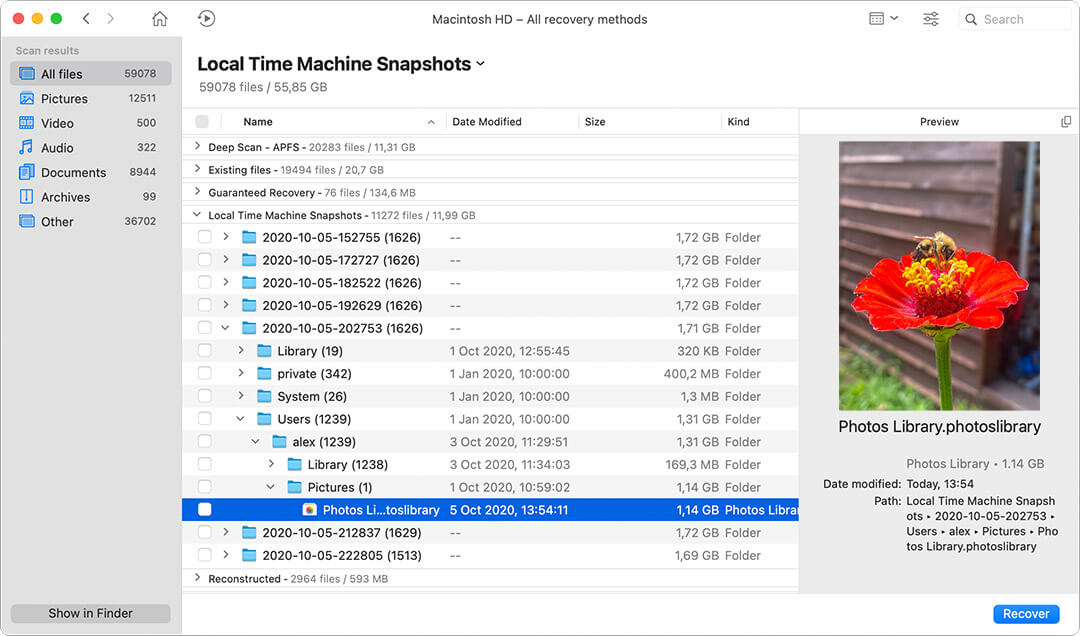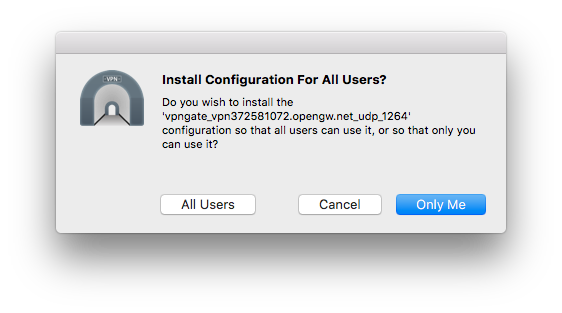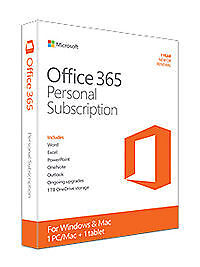
You need an external USB drive to install Windows on older Mac computers. To find out whether you have a Mac that requires an external USB drive, see the 'Learn more' section in the Apple Support article Install Windows 10 on your Mac with Boot Camp Assistant. If your Mac is a newer model that doesn't require a USB drive, follow the instructions in Install Windows on your newer Mac using Boot Camp instead.
Install Software on Mac Desktop Computer. Pre-Installation Steps for El Capitan, Sierra, High Sierra and Mojave: This section is for El Capitan, Sierra, High Sierra and Mojave users only. Failing to perform these steps on the mentioned systems prior to installation will cause the Software installation to fail. Browse Mac Software. Business Software. Free Mac Data Recovery. Apple Boot Camp Support Software Free VIEW → Install Windows using Intel devices. On your Mac, choose Apple menu System Preferences, then click Users & Groups. Open Users & Groups preferences for me. Click the lock icon to unlock it. Enter an administrator name and password. Click the Add button below the list of users. Click the New Account pop-up menu, then choose a type of user.
What you need
The keyboard and mouse or trackpad that came with your Mac. (If they aren't available, use a USB keyboard and mouse.)
A blank 16 GB or larger external USB 2 flash drive, formatted as MS-DOS (FAT).
To format an external USB drive as MS-DOS (FAT), use Disk Utility, located in /Applications/Utilities. In Disk Utility, choose View > All Devices, select the USB drive in the sidebar, then click Erase in the toolbar. In the dialog, enter a name for the drive, choose MS-DOS (FAT) from the Format pop-up menu, choose Master Boot Record from the Scheme pop-up menu, then click Erase.
A full-installation, 64-bit version of Windows 10 on a disk image (ISO file) or other installation media.
You can download a Windows 10 Disc Image (ISO File) from Microsoft.
Sufficient free storage space on your startup drive. For information about the amount of free space needed, see the Apple Support Article Install Windows 10 on your Mac with Boot Camp Assistant.
Before you begin
Before you install Windows, make sure you back up important files.
You can use Time Machine or any other method to back up your files. For information about backing up files, see Back up your files with Time Machine and Ways to back up or protect your files.
Perform the installation
Do the following steps in order.
Step 1: Check for software updates
Before you install Windows, install all macOS updates.
On your Mac, log in as an administrator, quit all open apps, then log out any other users.
Choose Apple menu > System Preferences, click Software Update, then install all available updates.
If your Mac restarts after installing an update, open Software Update again to install any additional updates.
Step 2: Prepare your Mac for Windows
Boot Camp Assistant prepares your Mac by creating a new partition for Windows named BOOTCAMP and downloading the Boot Camp support software.
Important: If you're using a portable Mac, connect it to a power source before continuing.
Connect an external USB drive or insert a flash drive into the USB port on your Mac; keep it connected or inserted while you install Windows and the Windows support software.
On your Mac, open Boot Camp Assistant , located in /Applications/Utilities.
At the introduction screen, click Continue.
The system is checked for total available disk space. Older Time Machine snapshots and cached iCloud files are removed to make space for Boot Camp. This process may take a long time to complete (you can click the Stop button to skip this process).
At the Select Tasks step, select all the tasks, then click Continue.
At the Create Bootable USB Drive for Windows Installation step, choose the Windows ISO image and the USB drive, then click Continue.
The Windows files are copied to the USB drive. This process may take a long time to complete (you can click the Stop button to interrupt this process).
At the Create a Partition for Windows step, specify a partition size by dragging the divider between the macOS and Windows partitions. If you have multiple internal hard drives, you can select a different hard drive from the one running macOS and create a single partition on that drive to use solely for Windows.
Click Install.
When this step is complete, the Windows installer starts.
Step 3: Install Windows

In the Windows installer, follow the onscreen instructions.
When you're asked where to install Windows, select the BOOTCAMP partition (you may need to scroll through the list of partitions to see it), then click Next.
WARNING: Do not create or delete a partition, or select any other partition. Doing so may delete the entire contents of your macOS partition.
Continue following the onscreen instructions to finish installing Windows.
After you install the Windows software, your Mac automatically restarts using Windows.
Follow the onscreen instructions to set up Windows.
Step 4: Install Boot Camp on Windows
After installing Windows, Boot Camp drivers that support your Mac hardware start installing.
Note: If the support software doesn't install automatically, you need to install it manually. For instructions, see the Apple Support article If the Boot Camp installer doesn't open after using Boot Camp Assistant.
In the Boot Camp installer in Windows, follow the onscreen instructions.
Important: Do not click the Cancel button in any of the installer dialogs.
If a message appears that says the software you're installing has not passed Windows Logo testing, click Continue Anyway.
You don't need to respond to installer dialogs that appear only briefly during installation, but if a dialog asks you to install device software, click Install.
If nothing appears to be happening, there may be a hidden window that you must respond to. Look behind open windows.
When the installation is complete, click Finish, then click Yes to restart your Mac.
After your Mac restarts, follow the instructions for any other installers that appear.
Topics Map > OS and Desktop Applications > Operating Systems > Mac OS X
This document describes how to enable installation of applications from sources other than the Mac App Store on macOS.
Background:
By default, Mac OS only allows users to install applications from 'verified sources.' In effect, this means that users are unable to install most applications downloaded from the internet or stored on physical media without receiving the error message below:
Users can follow the directions below to prevent this error message from appearing in one of two ways:
- Changing Gatekeeper's settings (10.8.x / 10.9.x / 10.10.x / 10.11.x)—this is useful for users who download a lot of programs that are not from 'verified sources.'
- Changing Gatekeeper's settings (10.12.x / 10.13.x)—the same steps as above, but for Mac's Sierra and High Sierra OS
- Manually allowing individual applications to launch—this is the best method for users who do not want to change the global setting to allow all applications to run.

For more information about this message, please visit Apple's KB article on the topic: http://support.apple.com/kb/HT5290.

Change Gatekeeper Settings (10.8.x / 10.9.x / 10.10.x / 10.11.x):
Open the System Preferences. This can be done by either clicking on the System Preferences icon in the Dock or by going to Apple Menu > System Preferences.
Open the Security & Privacy pane by clicking Security & Privacy.
Make sure that the General tab is selected. Click the icon labeled Click the lock to make changes.
Enter your username and password into the prompt that appears and click Unlock.
Under the section labeled Allow applications downloaded from:, select Anywhere. On the prompt that appears, click Allow From Anywhere.
Note: In Max OSX 10.12 Sierra and 10.13 High Sierra, the 'Anywhere' option does not appear. In these cases you will need to follow the instructions below for manually launching the application
Exit System Preferences by clicking the red button in the upper left of the window. You should now be able to install applications downloaded from the internet.

You need an external USB drive to install Windows on older Mac computers. To find out whether you have a Mac that requires an external USB drive, see the 'Learn more' section in the Apple Support article Install Windows 10 on your Mac with Boot Camp Assistant. If your Mac is a newer model that doesn't require a USB drive, follow the instructions in Install Windows on your newer Mac using Boot Camp instead.
Install Software on Mac Desktop Computer. Pre-Installation Steps for El Capitan, Sierra, High Sierra and Mojave: This section is for El Capitan, Sierra, High Sierra and Mojave users only. Failing to perform these steps on the mentioned systems prior to installation will cause the Software installation to fail. Browse Mac Software. Business Software. Free Mac Data Recovery. Apple Boot Camp Support Software Free VIEW → Install Windows using Intel devices. On your Mac, choose Apple menu System Preferences, then click Users & Groups. Open Users & Groups preferences for me. Click the lock icon to unlock it. Enter an administrator name and password. Click the Add button below the list of users. Click the New Account pop-up menu, then choose a type of user.
What you need
The keyboard and mouse or trackpad that came with your Mac. (If they aren't available, use a USB keyboard and mouse.)
A blank 16 GB or larger external USB 2 flash drive, formatted as MS-DOS (FAT).
To format an external USB drive as MS-DOS (FAT), use Disk Utility, located in /Applications/Utilities. In Disk Utility, choose View > All Devices, select the USB drive in the sidebar, then click Erase in the toolbar. In the dialog, enter a name for the drive, choose MS-DOS (FAT) from the Format pop-up menu, choose Master Boot Record from the Scheme pop-up menu, then click Erase.
A full-installation, 64-bit version of Windows 10 on a disk image (ISO file) or other installation media.
You can download a Windows 10 Disc Image (ISO File) from Microsoft.
Sufficient free storage space on your startup drive. For information about the amount of free space needed, see the Apple Support Article Install Windows 10 on your Mac with Boot Camp Assistant.
Before you begin
Before you install Windows, make sure you back up important files.
You can use Time Machine or any other method to back up your files. For information about backing up files, see Back up your files with Time Machine and Ways to back up or protect your files.
Perform the installation
Do the following steps in order.
Step 1: Check for software updates
Before you install Windows, install all macOS updates.
On your Mac, log in as an administrator, quit all open apps, then log out any other users.
Choose Apple menu > System Preferences, click Software Update, then install all available updates.
If your Mac restarts after installing an update, open Software Update again to install any additional updates.
Step 2: Prepare your Mac for Windows
Boot Camp Assistant prepares your Mac by creating a new partition for Windows named BOOTCAMP and downloading the Boot Camp support software.
Important: If you're using a portable Mac, connect it to a power source before continuing.
Connect an external USB drive or insert a flash drive into the USB port on your Mac; keep it connected or inserted while you install Windows and the Windows support software.
On your Mac, open Boot Camp Assistant , located in /Applications/Utilities.
At the introduction screen, click Continue.
The system is checked for total available disk space. Older Time Machine snapshots and cached iCloud files are removed to make space for Boot Camp. This process may take a long time to complete (you can click the Stop button to skip this process).
At the Select Tasks step, select all the tasks, then click Continue.
At the Create Bootable USB Drive for Windows Installation step, choose the Windows ISO image and the USB drive, then click Continue.
The Windows files are copied to the USB drive. This process may take a long time to complete (you can click the Stop button to interrupt this process).
At the Create a Partition for Windows step, specify a partition size by dragging the divider between the macOS and Windows partitions. If you have multiple internal hard drives, you can select a different hard drive from the one running macOS and create a single partition on that drive to use solely for Windows.
Click Install.
When this step is complete, the Windows installer starts.
Step 3: Install Windows
In the Windows installer, follow the onscreen instructions.
When you're asked where to install Windows, select the BOOTCAMP partition (you may need to scroll through the list of partitions to see it), then click Next.
WARNING: Do not create or delete a partition, or select any other partition. Doing so may delete the entire contents of your macOS partition.
Continue following the onscreen instructions to finish installing Windows.
After you install the Windows software, your Mac automatically restarts using Windows.
Follow the onscreen instructions to set up Windows.
Step 4: Install Boot Camp on Windows
After installing Windows, Boot Camp drivers that support your Mac hardware start installing.
Note: If the support software doesn't install automatically, you need to install it manually. For instructions, see the Apple Support article If the Boot Camp installer doesn't open after using Boot Camp Assistant.
In the Boot Camp installer in Windows, follow the onscreen instructions.
Important: Do not click the Cancel button in any of the installer dialogs.
If a message appears that says the software you're installing has not passed Windows Logo testing, click Continue Anyway.
You don't need to respond to installer dialogs that appear only briefly during installation, but if a dialog asks you to install device software, click Install.
If nothing appears to be happening, there may be a hidden window that you must respond to. Look behind open windows.
When the installation is complete, click Finish, then click Yes to restart your Mac.
After your Mac restarts, follow the instructions for any other installers that appear.
Topics Map > OS and Desktop Applications > Operating Systems > Mac OS X
This document describes how to enable installation of applications from sources other than the Mac App Store on macOS.
Background:
By default, Mac OS only allows users to install applications from 'verified sources.' In effect, this means that users are unable to install most applications downloaded from the internet or stored on physical media without receiving the error message below:
Users can follow the directions below to prevent this error message from appearing in one of two ways:
- Changing Gatekeeper's settings (10.8.x / 10.9.x / 10.10.x / 10.11.x)—this is useful for users who download a lot of programs that are not from 'verified sources.'
- Changing Gatekeeper's settings (10.12.x / 10.13.x)—the same steps as above, but for Mac's Sierra and High Sierra OS
- Manually allowing individual applications to launch—this is the best method for users who do not want to change the global setting to allow all applications to run.
For more information about this message, please visit Apple's KB article on the topic: http://support.apple.com/kb/HT5290.
Change Gatekeeper Settings (10.8.x / 10.9.x / 10.10.x / 10.11.x):
Open the System Preferences. This can be done by either clicking on the System Preferences icon in the Dock or by going to Apple Menu > System Preferences.
Open the Security & Privacy pane by clicking Security & Privacy.
Make sure that the General tab is selected. Click the icon labeled Click the lock to make changes.
Enter your username and password into the prompt that appears and click Unlock.
Under the section labeled Allow applications downloaded from:, select Anywhere. On the prompt that appears, click Allow From Anywhere.
Note: In Max OSX 10.12 Sierra and 10.13 High Sierra, the 'Anywhere' option does not appear. In these cases you will need to follow the instructions below for manually launching the application
Exit System Preferences by clicking the red button in the upper left of the window. You should now be able to install applications downloaded from the internet.
Mac Install Software Terminal
To Manually Launch Application:
While holding down the control key on your keyboard, click the application's icon once to make a dropdown menu appear.
Select Open from the menu. A new window will appear.
Click Open in that window to launch the application. You should only need to do this once per application, on the first launch. After that, you'll be able to launch the application any way you like.
Change Gatekeeper Settings (10.12.x / 10.13.x):
Install Mac Software On Pc
- For OSX Sierra, we recommend consulting Apple's documentation at the following link: macOS Sierra: Open an app from an unidentified developer
